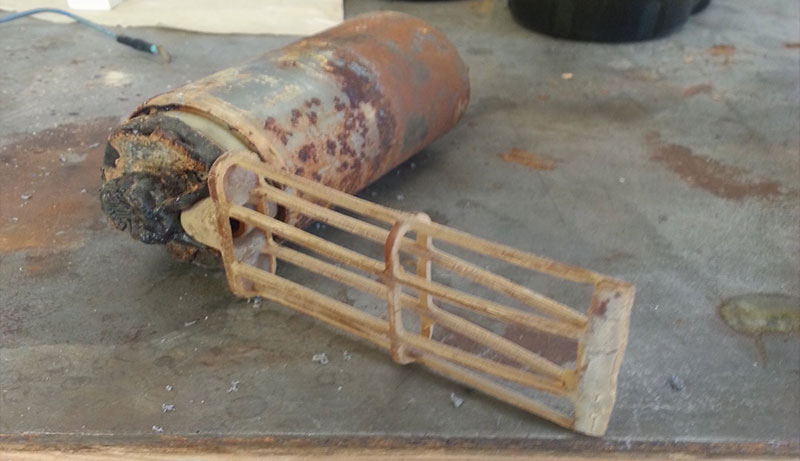At present, contamination and corrosion in gas tanks have increased. As such, the demand for different rust preventing products and polishing products have also increased subsequently. If the thought of having rust in your gas tank bothers you, then this article is definitely for you.
Corrosion in gas tanks can lead to a lot of long-term damages. Corrosion may happen due to the moist weather and heat. The heat causes the tank to form water in warmer months and the water in turn may contribute to the rust formation of the gas tank. Another source of water in the tank is definitely the residue water from cleaning the tank.
You can be cautious enough. No matter how hard you have tried to prevent rust, rust seems to find its way to your gas tank. Additionally, it then creates problems like filter clogging, obstructing the operation of release detection, reducing fuel lubrication and eventually leading to machinery failure.
However, if you are already here reading this far then don’t worry. In this article we will share with you tips on How to Keep Gas Tank from Rusting after Cleaning, no matter how many times you clean it. So, let’s jump into the topic.
How to Keep Gas Tank from Rusting after Cleaning?

Below, we share eight steps that you can take to make sure your gas tank does not rust easily.
1. Keeping fuel in a double-skinned tank is a good idea.
A tank’s double skin provides double the protection from changing temperatures and impact damage. It detects leaks and functions as a safety net to keep leaks at bay. Because there is no possibility of moisture or air getting in, a double skin guarantees that the fuel tank is sealed within a vacuum to avoid corrosion.
2. Apply a coat of paint to the tanks.
By resisting water and preventing rust from accumulating beneath the tank, a corrosion-resistant finish like Hammerite Direct to Rust Metal Paint will safeguard it for much longer.
3. Set up a supplementary containment system.
A concrete or brick bund (secondary containment) is legally needed to contain and prevent spillages that may occur as a result of tank penetration. It must be able to retain 110 percent of its contents, so that if there is a leak, the tank is overfilled, or water develops in the tank, the outer bund will be able to securely contain it.
4. Set up a valve and a bung.
An exterior bund’s disadvantage is that it is exposed to the weather and will likely fill up with rainfall, which might pile up over time and cause oil to escape by breaching the bund wall.
It’s critical to take strong steps to collect rainwater from exposed bunds, such as using a valve. This must be kept closed at all times; however, it can be opened to remove any uncontaminated water.
Another way to avoid leaks is to dewater the tank at the outlet pipes, such as using a bung. This will identify oil-water contacts in liquid form. It should be installed 14 inches from the tank’s bottom to allow water to escape while keeping the oil contained. Tanks must be dewatered every six months to prevent corrosion caused by water build-up.
5. Analyze the fuel
Contamination must be recognized early on so that any concerns may be identified, diagnosed, and repaired. That’s why it’s suggested that you do it every six months so you can be proactive rather than reactive.
Fuel that has once been polluted is more likely to become contaminated again as its stability deteriorates. Regularly inspecting and verifying the state of your gasoline will allow you to react swiftly if pollutants reappear.
Water, FAME, and sulfur content, viscosity, density, and microbiological contamination are all evaluated during a fuel analysis. Contamination can cause major issues with the interior compartments of your gear or equipment, causing them to be damaged beyond repair or, even worse, halting operations.
6. Polishing of fuel
The degree of pollution in the fuel will be determined by analysis. Fuel polishing can be done if the quality hasn’t deteriorated too much. This is a time-consuming procedure that entails extracting tainted fuel in two steps in order to remove water, silt, and microbiological contamination.
Filtration comes first, followed by depolymerization, which breaks down particles and polishes the gasoline to like-new condition.
Because gasoline polishing just restores the fuel itself, the method may be less successful if the polished fuel is kept in the same tank. The tank’s exposure to tainted gasoline resulted in microbial growth lining the tank, recontaminating the previously polished fuel and putting you right back where you started.
With this in mind, fuel polishing alone may not be sufficient, necessitating the use of other services, especially for organizations that rely entirely on backup power.
7. Cleaning the tank
Tank cleaning necessitates draining the fuel from the tank in order to clean and disinfect it. Microbial growth, sludge, and heavy silt build-up that collect at the bottom of the tank, walls, and struts are normally removed with industrial vacuums.
The contaminated gasoline can then be polished and poured back into the clean tank, or it can be disposed of if it has degraded too much.
8. Keep your gasoline tanks full.
Keeping gasoline tanks full, especially during the warmer months, provides less room for air, which means less humidity and condensation.
Final Words

Congratulations. Now you know the best tips and tricks present of How to Keep Gas Tank from Rusting after Cleaning and contamination. Our steps are proven to give you the best results. So, don’t worry about the outcome and just enjoy the process of following our steps well. You will get good results, hopefully. Best of luck.
Related Post:



